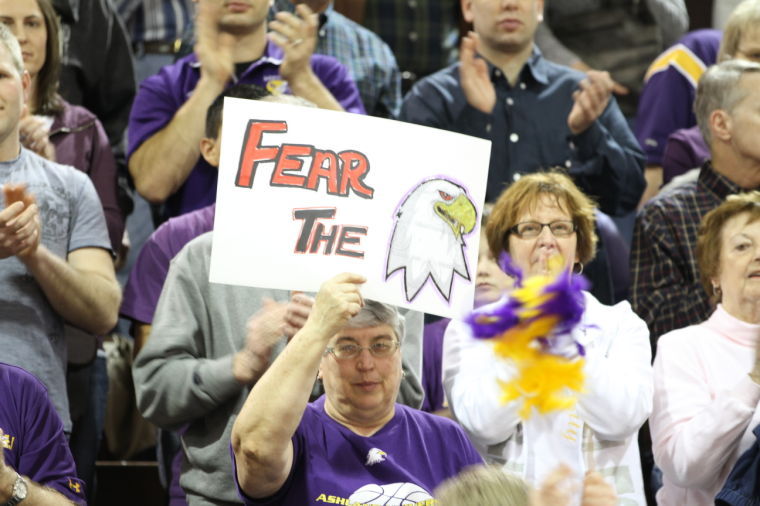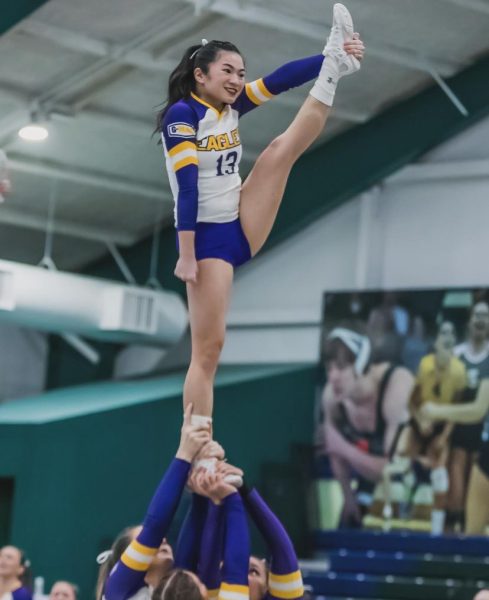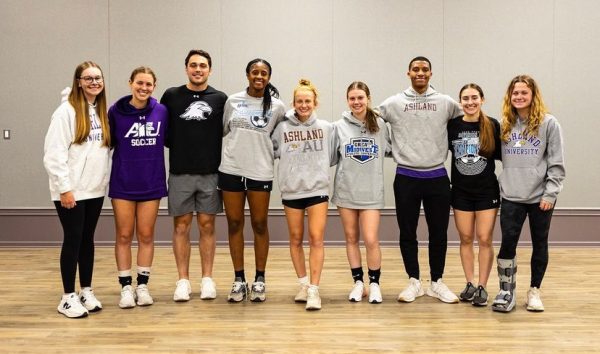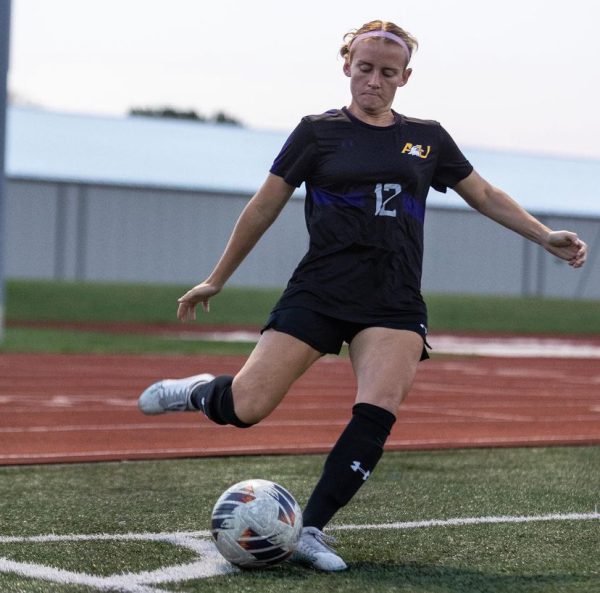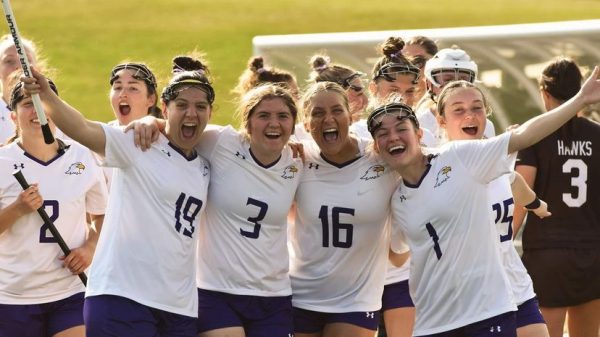Breaking down the competition: NCAA Midwest Regional
March 13, 2013
It’s tournament time. For the second year in a row, the Ashland women’s basketball team has the top seed in the Midwest region and will host the regional tournament, which starts Friday at Kates Gymnasium.
The Eagles are ranked No. 2 in the country, 16 spots ahead of the next closest team in the region (Findlay), but don’t think for a second that this will be a cake walk to get to the Elite Eight in San Antonio.
No. 8 Indianapolis (19-9)
The skinny: We’ll start with Ashland’s first round opponent, the Indianapolis Greyhounds. Indianapolis began its season by winning its first six games and 11 of its first 12. At that point—Jan. 12—the Greyhounds were ranked No. 5 in the country. Since then they are 8-8 and barely held onto the last spot in the tournament field.
Strenghts: Guard play; Scoring (36th in the country, 70.9 ppg), shooting percentage (third, 46.1 percent), opponent field goal percentage (13th, 34.1 percent), turnovers per game (43rd, 15.5)
Weaknesses: Size. Indianapolis relies heavily on the scoring of its guards and lacks the inside presence to match up with bigger teams in the paint. The Greyhounds also struggle in rebounding.
Against Ashland: All-time Indy is 19-12 against Ashland, but AU is 4-3 in the last seven meetings. The two played this year—Dec. 14 at Indy—and the Eagles handed the Greyhounds their first loss of the season, 70-54, while playing without Taylor Woods. Kari Daugherty had 24 points, 13 rebounds, five assists, two steals and two blocks. Daiva Gerbec added 16 points and 17 rebounds and Alyssa Miller had 12 points, six rebounds and two assists. Ashland held a 50-25 rebounding edge and grabbed 20 offensive rebounds. Katy McIntosh led Indy with 19 points and Kristin Turner had 13.
Players to watch: 5-foot, 8-inch junior guard Katy McInthosh and 5-7 senior guard Kristin Turner. The pair both average 16.5 points per game (67th in the country) and are the Greyhounds’ only sources of consistent offense. McIntosh is a slasher who ranks 14th nationally in field goal percentage (54.4 percent), while Turner has made 56 3-pointers at a 30.8 percent clip.
Fun fact: Indianapolis’s head coach is 7-foot, 3-inch Constantine Popa who played at the University of Miami (Fla.) before getting drafted by the Los Angeles Clippers in 1995. He floated around in European leagues and is believed to be the tallest coach in NCAA history.
No. 5 Kentucky Wesleyan (20-8)
The skinny: The Panthers come in as one of the hottest teams in the region. They won 10 of 11 games down the stretch before falling to Maryville in the semifinals of the Great Lakes Valley Conference tournament. This is their second tournament appearance.
Strengths: Scoring (46th, 70.1 ppg), Assist-turnover ratio (48th, 0.93), turnovers per game (23rd, 14.6).
Weaknesses: Lack of star power. Lauren Goffinet is the leading scorer at 11.4 ppg, but nine players average 13 or more minutes. Much like Findlay, the Panthers try to wear teams down by having fresh bodies on the court at all times. The problem: they seem to fade near the end of games. Kentucky Wesleyan has been outscored 961-947 in the second half of its games. The Panthers also lack size.
Against Ashland: All-time, KWC is 10-15 against the Eagles and 0-4 in the last four meetings. The two teams played Nov. 17 in Ashland’s first home game of the season, and AU won handily, 92-56. Kari Daugherty had 20 points and 15 rebounds and Lindsay Tenyak had 19 points. The Eagles controlled the boards, 47-28, and outscored the Panthers in the paint, 34-24.
Players to watch: All of them. Other than Goffinet, no one really stands out. T’Essence Phelps leads the team in rebounding at 6.6 per game to go with 8.3 ppg.
No. 4 Michigan Tech (20-8)
The skinny: One of the most consistent programs in the Great Lakes Intercollegiate Athletic Conference, Michigan Tech has followed a disappointing 2011-12 season with a 20-8 campaign this year and a return to the NCAA tournament. The Huskies reached the national championship game in 2011 and will not go quietly this year, especially with senior guards Sam Hoyt and Emma Veach playing their last games.
Strenghts: Guard play, defense; Assist-turnover ratio (fifth, 1.15), blocks per game (38th, 4.4), free throw percentage (26th, 74.6 percent), 3-pointers per game (14th, 7.4), 3-point field goal percentage (third, 39.7), turnovers per game (fifth, 12.7).
Weaknesses: Interior defense. The Huskies start two freshmen inside, which might not be a problem against Kentucky Wesleyan but could spell trouble if they meet Ashland for the third time this season.
Against Ashland: You know that episode of Recess where the characters play a kickball game against a team from another school that is a mirror image of themselves? That’s kind of what it feels like when these two get together. They play very similar, disciplined basketball—especially defensively—and are class acts from the top down. It’s no wonder both programs have been in the national spotlight the last couple of years. The respect between them is immense. All-time, MTU leads the series, 14-11, but AU has taken the last four. This year, Ashland won both meetings by a combined 23 points.
Players to watch: It all starts with senior guards Hoyt and Emma Veach. The 5-foot, 5-inch Hoyt is one of the toughest players in the country and she can score from anywhere. She averages 16.4 points per game and averages 2.46 3-pointers a game (41st) at a clip of 40.4 percent (18th). She is also the top free throw shooter at the regional tournament at 88.9 percent (ninth). Veach averages 8.5 points and 5.4 rebounds, and she led the GLIAC in 3-point field goal percentage (47.3). Freshman forward Kylie Moxley averages 10.1 ppg and sophomore Jillian Ritchie is deadly from 3-point range (45.1 percent).
No. 3 Findlay (24-5)
The skinny: No. 18 Findlay has had an unbelievable season and believes it can top it off with a regional championship and a trip to San Antonio. The Oilers are the only team in the region to beat Ashland in the last two seasons, and they come in having won 13 in a row before last Sunday’s loss to the Eagles in the GLIAC championship.
Strenghts: Pressure defense; Scoring (48th, 70.0 ppg), scoring margin (27th, 11.5), steals per game (12th, 12.9), turnover margin (17th, 5.24).
Weaknesses: Inside scoring. But what Findlay lacks in size it makes up for in intensity. The Oilers press full court and use a matchup zone to confuse teams and create turnovers. Besides an inside presence, Findlay lacks a second scorer behind senior Kayla Brown. It’s scorer by committee, and if the committee doesn’t show up the Oilers struggle.
Against Ashland: You already know about Findlay’s 66-51 upset of then-undefeated and No. 1-ranked AU on Feb. 14, so I’ll spare you the details. In the other two meetings this year, Ashland has outscored UF 140-90. Both of those matchups were at Kates Gymnasium, which is where the fourth meeting would be. With Kari Daugherty in the lineup for AU on Sunday, Findlay was not able to create turnovers and its offense sputtered in the half court. All-time, Ashland leads the series, 22-15.
Players to watch: It’s all about what Brown can do for the Oilers. She averages 17.6 points (45th) and 2.7 steals (45th) and she is 29th in the nation in field goal percentage (51.6) and 47th in 3-point field goal percentage (37.1). Other than Brown, no one really stands out for the Oilers. Senior Tai Dotson averages 9.3 ppg and 5.3 rpg and senior Kendra Elam is a standout defender who can shoot from the outside.
No. 6 Wayne State (20-8)
The skinny: If you had to pick a Cinderella from this field, Wayne State would have to be the choice. The Warriors have come out of nowhere to tie for the top record in the GLIAC North and earn just their second NCAA tournament bid in program history.
Strengths: Size and athleticism; scoring (50th, 69.8), rebounding margin (third, 12.3).
Weaknesses: Efficiency. The Warriors only shoot 39.2 percent from the field and 31.1 percent from behind the arc. With 537 offensive rebounds on the year, they thrive on second-chance points. Keeping Wayne State off the glass is easier said than done, but doing so will give you a major advantage.
Against Ashland: All-time, Wayne State is 13-31 against the Eagles, and AU has won four of the last five. In this season’s only meeting on Dec. 5, Ashland won 77-58. Kari Daugherty had 29 points and 18 rebounds.
Players to watch: Talisha Bridges is the Warriors’ most athletic player and is the leading scorer at 15.4 ppg (99th) and 7.0 rpg, but Juanita Cochran is a brute inside who leads the team at 9.0 rpg. She also scores 11.0 ppg. Keeping her off the offensive glass is a must to shut down the Warriors.
No. 7 Wisconsin-Parkside (20-9)
The skinny: Wisconsin-Parkside is right back where it was a year ago, when it lost in the regional championship to Ashland. This year, the Rangers are in a little worse shape. They lost three out of four games in January to fall to 9-6, but have rallied to win 11 of 15 and sneak in as the seven seed.
Strengths: Pressure defense; Field goal percentage (10th, 44.2 percent), free throw percentage (40th, 73.8 percent), rebound margin (45th, 4.8), scoring defense (22nd, 55.5 ppg), scoring margin (31st, 10.8), 3-point field goal percentage (22nd, 35.3).
Weaknesses: There really aren’t too many. A lot of the Rangers’ scoring comes from the outside, but they shoot it very well. They could easily be sitting where Lewis is right now, but have lost three games to the Flyers by a combined 11 points, including a two-point loss in the GLVC semifinals. A fourth meeting hangs in the balance.
Against Ashland: The Rangers are 0-3 all-time against the Eagles, with the last loss coming 78-65 in last year’s regional final.
Players to watch: Jenna Endisch gets things started for Wisconsin-Parkside. She averages 14.1 points per game and 3.4 rebounds. She also ranks among the nation’s best in 3-pointers per game (sixth, 3.14) and 3-point field goal percentage (58th, 36.2). Sierra West is fifth in the country in assists per game (5.8) and is second on the team in scoring at 9.1 ppg.
No. 2 Lewis (24-5)
The skinny: No. 20 Lewis has been the top team in the GLVC all year. The Flyers come in having won eight in a row, including a 15-point win over Maryville in the conference championship. Besides back-to-back losses in February to Southern Indiana and Kentucky Wesleyan, they have had few slip-ups on the way to the No.2 seed in the region.
Strengths: Winning close games; Scoring (34th, 71.0 ppg), blocks per game (39th, 4.3), field goal percentage (33rd, 42.7 percent), field goal percentage defense (34th, 35.7), free throw percentage (40th, 73.8 percent), 3-point percentage defense (first, 23.3 percent), 3-point percentage (45th, 33.8 percent).
Weaknesses: The Flyers are turnover prone (17.6 per game) and have a negative turnover margin (-2.8).
Against Ashland: Ashland leads the all-time series, 13-7, but the two teams have not played since the Eagles left the GLVC for the GLIAC following the 1994-95 season. A match-up between this year’s teams would be interesting since Ashland has blown out most of its opponents and has not been in a close game all year, while Lewis has thrived in close games. If the Flyers can keep it close, the edge might go to them.
Players to watch: Forwards Jess and Sam Reinhart provide consistent numbers inside. Jess leads the team in scoring (14.8 ppg) and rebounding (7.2 rpg), while Sam ranks second in both categories (11.1, 6.5). Jess also ranks nationally in field goal percentage (45th, 49.8) and free throw percentage (49th, 83.1). Nikki Nellen runs the point and averages 7.5 points and 4.6 assists (39th).


